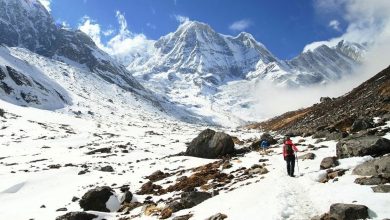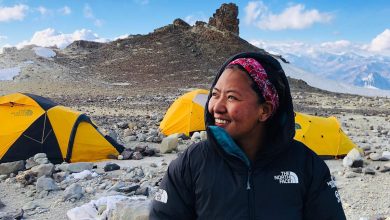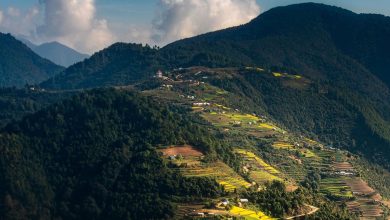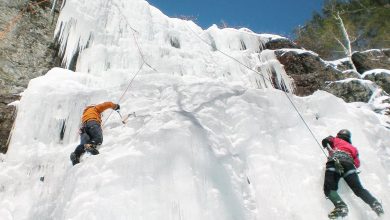Mount Kanchenjunga: Everything You Need To Know About World’s 3rd Highest Mountain
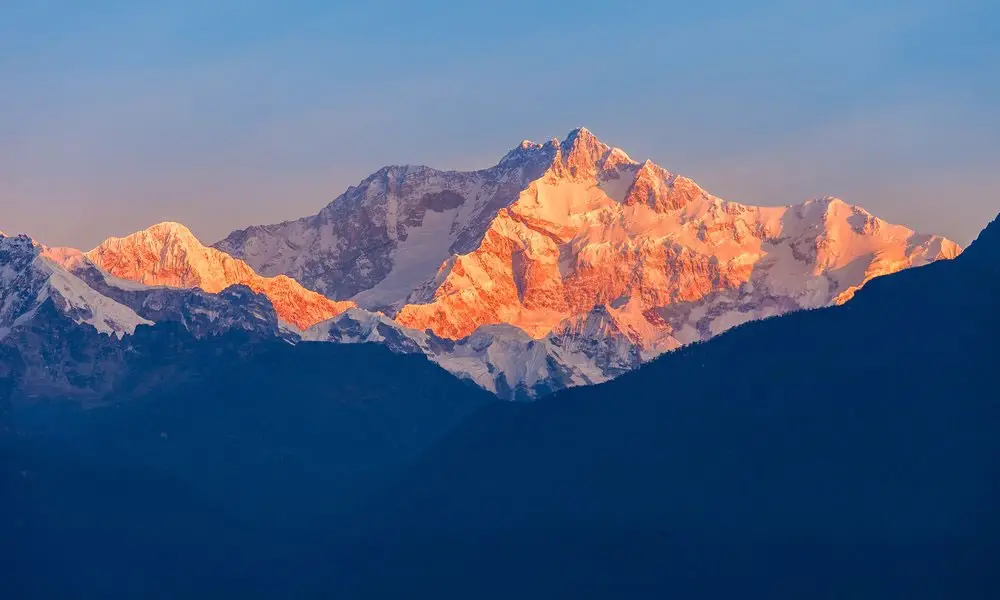
Mount Kanchenjunga is the third-highest mountain in the world, standing at 8,586 m (28,169 ft) in the Himalayas. The mountain is a part of the Lhonak River and Jongsang La in the north, by the Tamur River in the west and the Teesta River in the east. Three of the five peaks, including Main, Central, and South, are directly on the boundary with Nepal. Likewise, the other two, West and Kangbachen, are in Nepal’s Taplejung District. It falls in the border region between Nepal and Mangan district, Sikkim state.
Kanchenjunga is also known as Kanchanjunga, Kangchenjunga, Kanchanjanghā and Khangchendzonga. The peak was considered the tallest mountain in the world until 1852. Mount Everest, called Peak XV, was later discovered to be the tallest mountain after 1852. This calculation was done by the Great Trigonometrical Survey of India in 1849. In 1856, Kangchenjunga was considered the third-highest mountain in the world, and it remains so to this day.
If you want to know more about the mountain, make sure that you read till the end of this article!
Why is Mount Kanchenjunga famous?
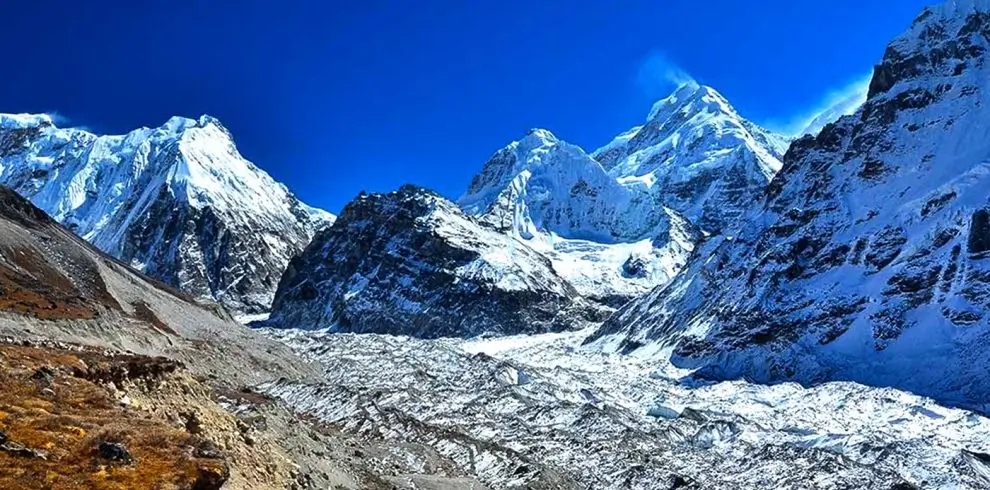
Mount Kanchenjunga is located on the Indo-Nepal border. In Sikkim, it is known as a holy mountain with sacred significance. Joe Brown and George Band became the first duo to ever climb Mount Kanchenjunga in the year 1955 on 25 May. They were a part of the 1955 British Kanchenjunga expedition. They could not, however, summit the mountain, given the fact that they had promised Tashi Namgyal, the Chogyal of Sikkim, not to go to the peak. The adjoining national park to Mount Kangchenjunga, Khangchendzonga National Park, was announced as a UNESCO World Heritage Site in the year 2016.
Hence, people, especially those with an interest in mountaineering, recognize Mount Kanchenjunga as a famous mountain all around the world. In fact, its ascent is quite difficult given the height and some restrictions in the Indian parts of the mountain.
Mount Kanchenjunga Height
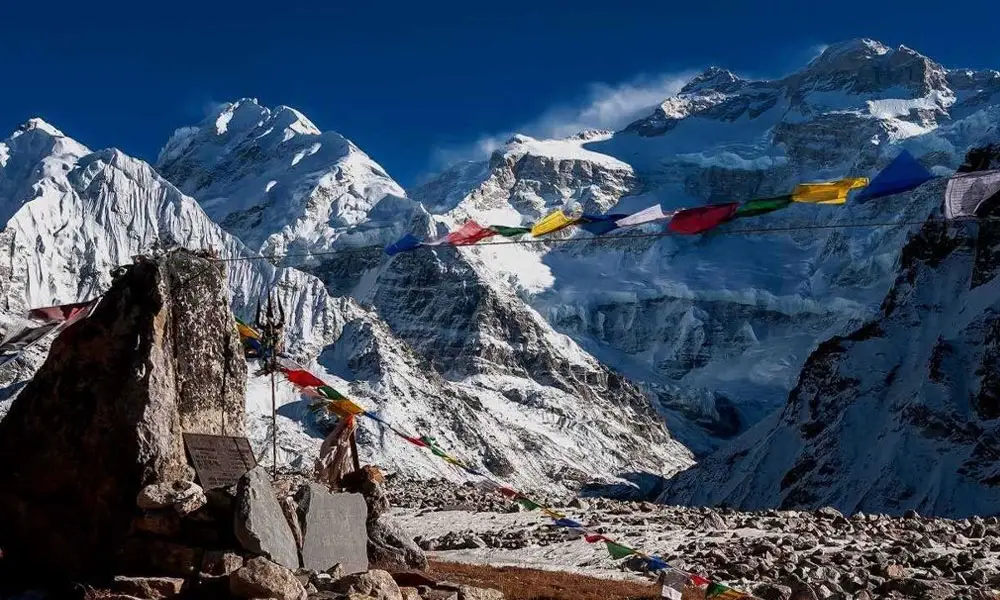
Mount Kanchenjunga is known for its height and mightiness. The mountain has been guided for many years to this day. It stands tall at 28,169 feet (8,586 meters) above sea level, making it the third tallest mountain in the world after Mount Everest in Nepal and Mount K2 in Pakistan.
Mount Kanchenjunga is one of the most preferred tall mountains to climb if you really want to ascend one of the tallest mountains in Nepal. After Mount Everest, Mount Kanchenjunga is the second-tallest mountain in Nepal and the third-tallest in the world.
The traffic in this area is much lesser than that of Mount Everest. Hence, trekking to Kanchenjunga is much more peaceful and smoother to many in comparison to the latter.
Where is Mount Kanchenjunga located?
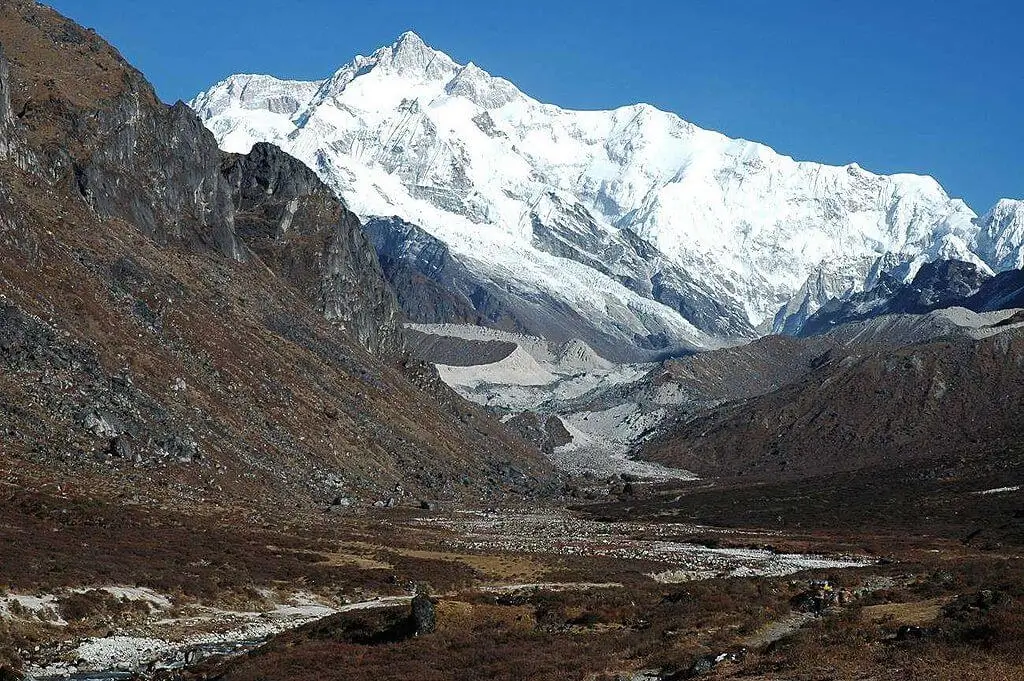
Kanchenjunga is in the Taplejung District, Nepal, and Mangan District, Sikkim, India. The mountain is located on the Indo-Nepal border, which makes it a part of both Nepal and India. It lies approximately 46 miles (74 km) northwest of Darjiling, Sikkim, in the eastern Himalayas, on the border between Sikkim state in northeastern India and eastern Nepal. The mountain is around 20 kilometers to the South of Tibet.
The Kanchenjunga transnational environment includes Nepal, India, Bhutan, and China. And the protected area of the mountain is about 6,032 km2 (2,329 sq mi). The protected areas in all the respective regions include Kanchenjunga Conservation Area in Nepal, Khangchendzonga National Park, Varsey Rhododendron Sanctuary, Fambong Lho Wildlife Sanctuary, Kyongnosla Alpine Sanctuary, Maenam Wildlife Sanctuary, Shingba in Sikkim, Jore Pokhri Wildlife Sanctuary, Singalila National Park, Senchal Wildlife Sanctuary, Mahananda Wildlife Sanctuary and Neora Valley National Park in Darjeeling, and Torsa Strict Nature Reserve in Bhutan.
Several endangered species like white-bellied musk deer (Moschus leucogaster), blood pheasant (Ithaginis cruentus), chestnut-breasted partridge (Arborophila mandellii), snow leopard (Panthera uncia), Asian black bear (Ursus thibetanus), red panda (Ailurus fulgens), etc. reside in these protected spaces. Likewise, one is likely to spot plants like rhododendrons and orchids in these areas. The mixed ecology of Mount Kanchenjunga includes the Eastern Himalayan alpine shrub and meadows, the Terai-Duar savanna and grasslands, and the eastern Himalayan broad-leaved and coniferous forests.
Mount Kanchenjunga Base Camp

The Kanchenjunga base camp is known as Kanchenjunga North Base Camp, as well as Pang Pema. On the Nepalese side, there are two base camps, one on the north and the other on the south. In case the mountaineers want to increase acclimatization, they should start from the North. Likewise, the base camp’s south part gives you less acclimatization time. There is a gradual increase in altitude every passing day when you start from the north side of the base camp. Similarly, going uphill from the south can give you the experience of increased altitude at a faster pace.
Once the mountaineers start from Suketar in the north, they are led towards Chiruwa, where they can find pilgrims hustling towards the holy Pathibhara Devi temple located on the hilltop. The teahouses, similarly, are quite busy around the base camp. As you ascend higher, there won’t be a sign of teahouses. However, you get to experience the true beauty of nature in the Kanchenjunga area when you get to see amazing fruits and beautiful plants around the area just a little above the base camp. One such plant would be cardamom which is found in abundance there.
Similarly, the climb from the South side starts from Happu Khola. Though the trail from the southern side is much shorter as compared to the northern side, you will not be deprived of the beautiful view of the alpine forests, the Himalayas of the Indo-Nepalese border, as well as the beautiful and rare ecology of the mountainous area. The base camp is located in Ramche. Enthusiastic mountaineers also get to experience the beautiful and rare culture of the rural part of Eastern Nepal. The residents of the area are mostly Rai and Limbu from the typical and authentic Kirat community. These people tend to have one of the rarest yet most beautiful and unique cultures, dialects, languages, and even food that you might be lucky to experience when you are in the southern part of the base camp. Likewise, alpine forests, along with snowcaps and glaciers, are beautiful to view along with some animals like snow leopard, Asian black bear, and red panda(which is also the regional animal of Sikkim), along with birds like snow cock and pheasant, which are just as rare.
Speaking of difficulty, a beginner can opt to make a move from the northern base camp, while a mountaineer who is much experienced in mountaineering can move forward from the southern part of the base camp.
Mount Kanchenjunga Weather

Kanchenjunga has weather that is warmer on the lower sides while colder as the trekkers make their way up to the peak. The altitude really increases the possibility of the trekkers finding it difficult to ascent as the temperature can drop below 25 degrees during the summer. Likewise, during the winter, the temperature is always below 15 degrees, making winter ascents tougher and almost impossible for mountaineers as they go higher up in the mountain.
Kanchenjunga area is likely to get rainy during the summer season. This adds to the dangers of the area as the trails get muddy, slippery, and difficult, raising the chances of falling or leading to any sort of accident while trying to reach the top. Hence, mount climbers must be aware not to climb the mountain during rainy seasons.
Furthermore, mountaineers and trekkers should prefer to trek the mountain during spring and autumn when the weather, as well as the season, is in favor of them.
Mount Kanchenjunga Trek
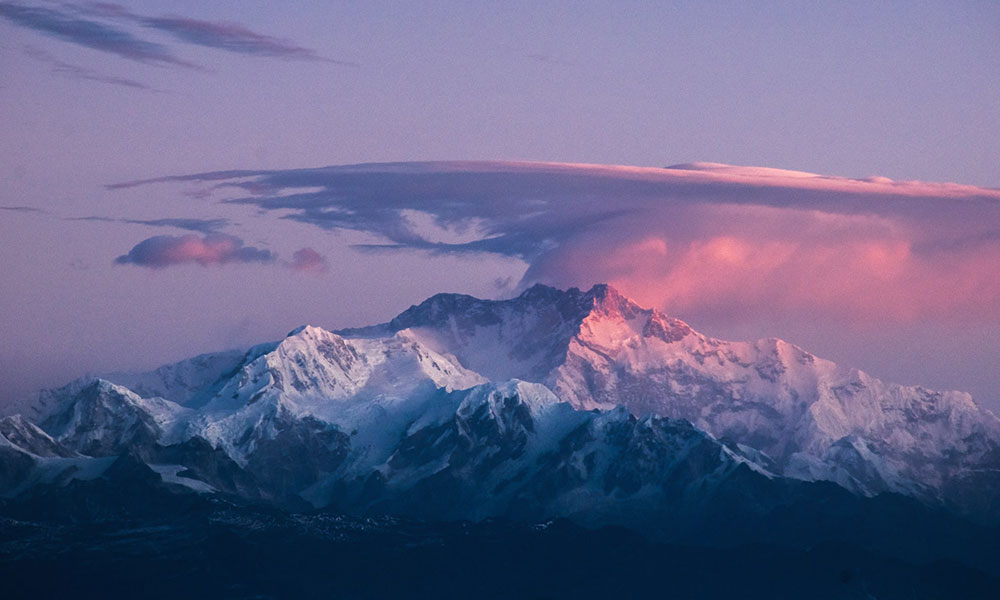
Trek to Mount Kanchenjunga might be a little too difficult than your regular trips to the mountains. Even a Mount Everest trek can be considered a tad bit easier than a trip to Mount Kanchenjunga, while the Mount K2 trek can be more difficult than that of Mount Kanchenjunga. A mountain climber needs to know that he has enough experience and expertise in climbing 8000-ers if he wants to climb the mountain. It is impossible to climb a mountain that does not guarantee your safety, as is the case for Mount Kanchenjunga.
Therefore, you need to be physically fit and not suffer from any illness, especially respiratory sicknesses, if you want to be able to trek to Mount Kanchenjunga. Moreover, you must be prepared to walk continuously for at least three weeks in your trek to Kanchenjunga. Carry along a light backpack with all the necessary equipment, and make sure you have a porter and a Sherpa along with you to climb the mountain safely and to succeed in summiting.
Likewise, the cost to climb Mount Kanchenjunga varies depending on what kind of trip you are on. It is likely to cost you around US$2000 to US$2,500. Though the cost may exceed or even remain in excess. The expenses depend on how much a person spends and saves. But on a mountainous trip with possibilities of dangers, it is suggested that you carry a little more than your budget just in case. And do not be too stingy to spend, but saving money on a trek like this one will not spare you your life. The more services and facilities you purchase, the safer you will be!
Kanchenjunga National Park
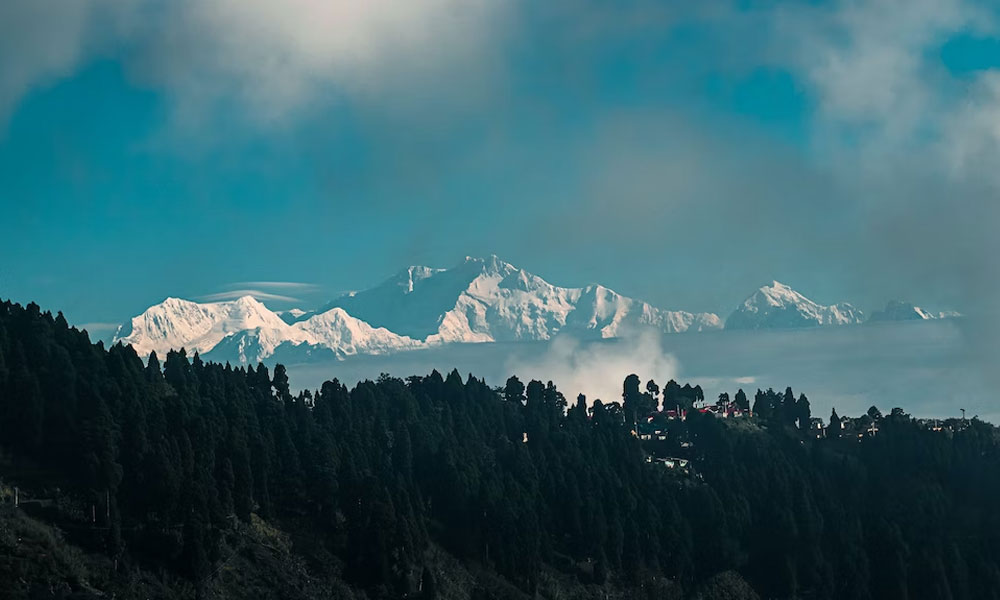
The Kanchenjunga National Park, known as Khangchendzonga National Park and Kanchenjunga Biosphere Reserve, is located in Sikkim, India. The national reserve became the first “Mixed Heritage” of India in July 2016 after being inscribed in the UNESCO World Heritage Sites list. Even the national park, along with the mountain, holds a sacred value for people in Sikkim as one of the holiest monasteries, known as Tholung monastery, is situated in the buffer zone of the park.
The national park is in the Mangan district and Gyalshing districts of Sikkim. The national reserve joins the Qomolangma National Nature Preserve in Tibet in the north and Kanchenjunga Conservation Area in the west in Nepal. There is snowfall in the national park during winter, and it rains from May to the middle of October.
Likewise, the Kanchenjunga National Park is a home for musk deer, snow leopard, Indian leopard, Himalayan tahr, dhole, sloth bear, viverrids, red panda, Tibetan wild ass, Himalayan blue sheep, mainland serow, goral, and takin, as well as snakes such the rat snake and Russell’s viper. Birds like western tragopan, snow pigeon, Tibetan snowcock, impeyan pheasant, satyr tragopan, osprey, Himalayan griffon, lammergeier, blood pheasant, Asian emerald cuckoo, sunbird, and eagle are also present in the area. You will likely discover plants like temperate mixed and broadleaf forests with oaks, fir, birch, maple, and willow in the National Park.
Mount Kanchenjunga Viewpoint
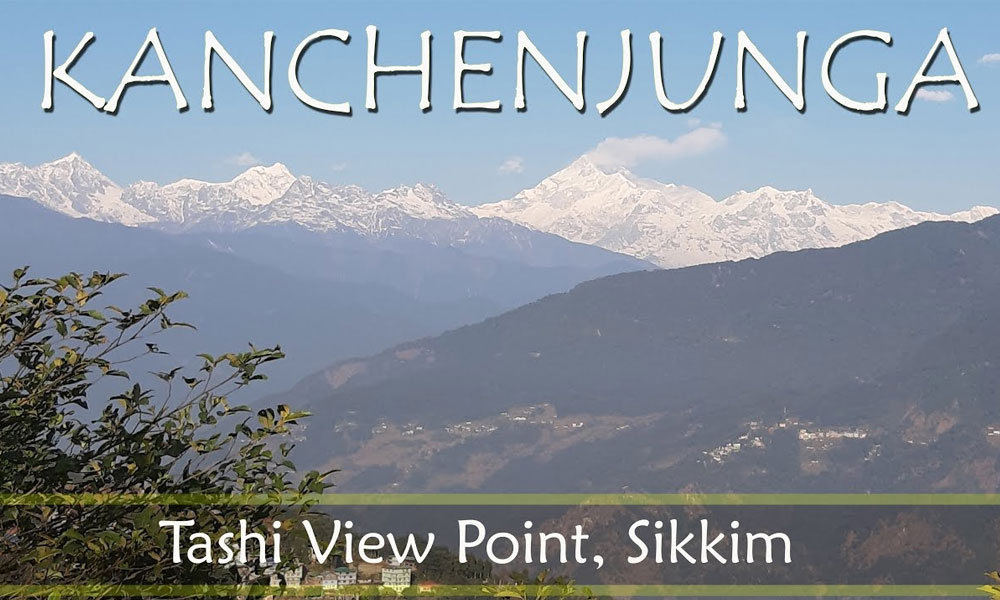
There are many places, especially in Darjiling and Sikkim, from where you can get the perfect view of Mount Kanchenjunga. You can find the best possible view of the mountain besides the tea stands and the beautiful view of the hilly parts of India. But make sure you visit there for a view at the perfect time. Some seasons will cloud your eyes with clouds, which will only disappoint you. When you visit these places during certain seasons, you will likely return home disappointed.
But, when you visit Sikkim and Darjiling, especially to get a perfect view of Mount Kanchenjunga during the months from November to April, you will definitely get what you have been looking for!
While you’re at it, look for a triangular East face and the Summit Ridge to find Mount Kanchenjunga when at Sikkim and Darjiling.
Has anyone climbed Kanchenjunga?
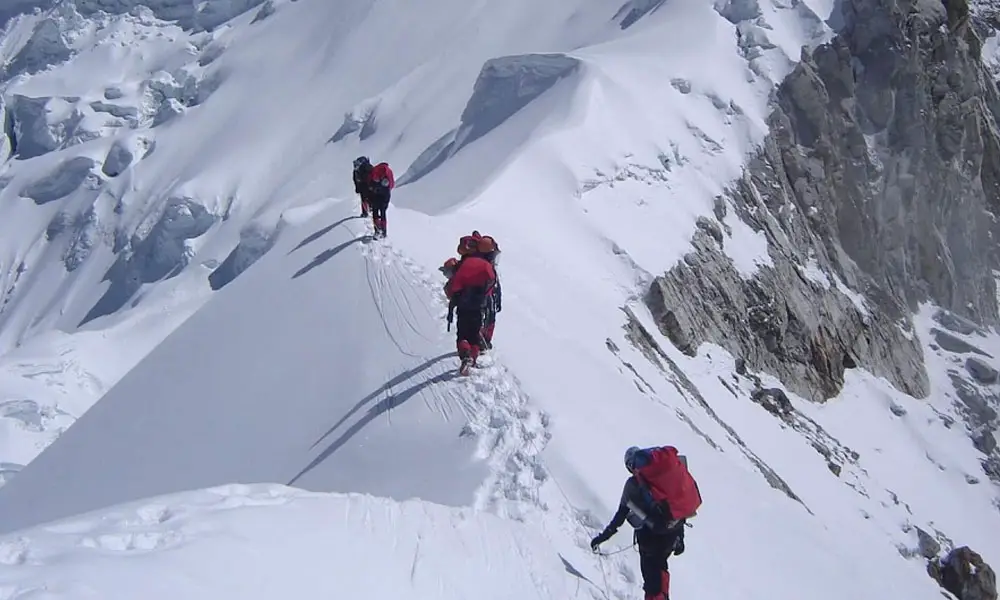
Mount Everest has, apparently, been deemed easier to climb in comparison to Mount Kanchenjunga. Many who have successfully scaled Everest fail to climb Mount Kanchenjunga for numerous reasons. The death rate in Kanchenjunga is 21% which is fairly high considering the fact that it is not the first but the third tallest mountain in the world. There has been a record of at least 312 climbers who have climbed the mountain to this day.
And the first two climbers, George Band, and Joe Brown, were restricted from summiting the mountain by the then King of Sikkim.
Best Hotels in Sikkim with Kanchenjunga View
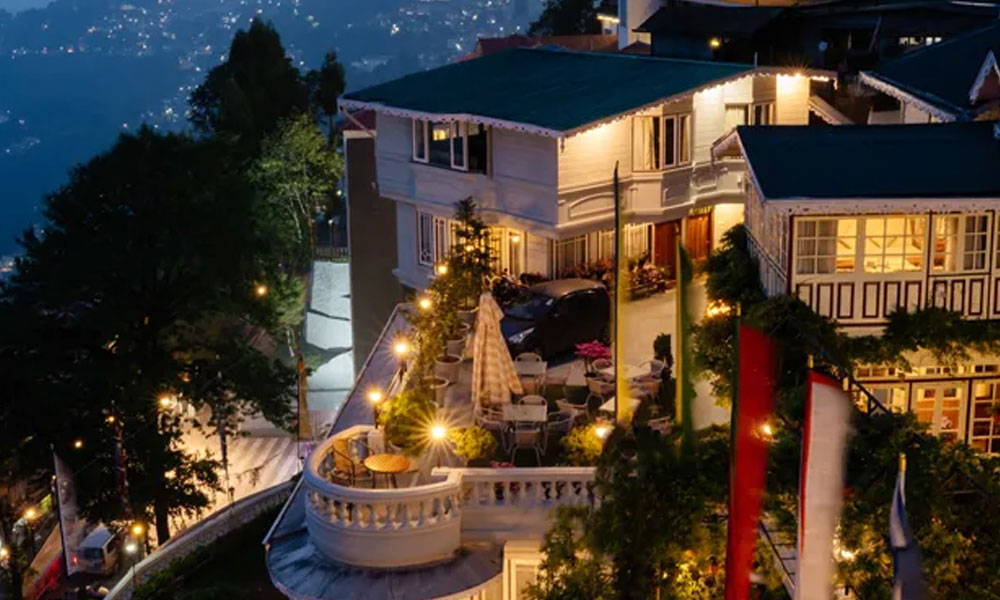
Many hotels in Sikkim will help you get the most beautiful view of Kanchenjunga, some of which we have listed below!
- Sikkim Villa Tosca in Gangtok
- Petals in Gangtok
- Hotel Sonam Delek in Gangtok
- The Di-Lac Retreat (on the way to Nathula, near Ganesh Tok)
- Woodberry Hotel and Spa in Upper Burtuk
- Jewel of the East Residency and Spa in Gangtok
- Hotel Prime View Villa in Gangtok
- Hotel Tarayana Grand in Gangtok
Best Hotels in Darjeeling with Kanchenjunga View
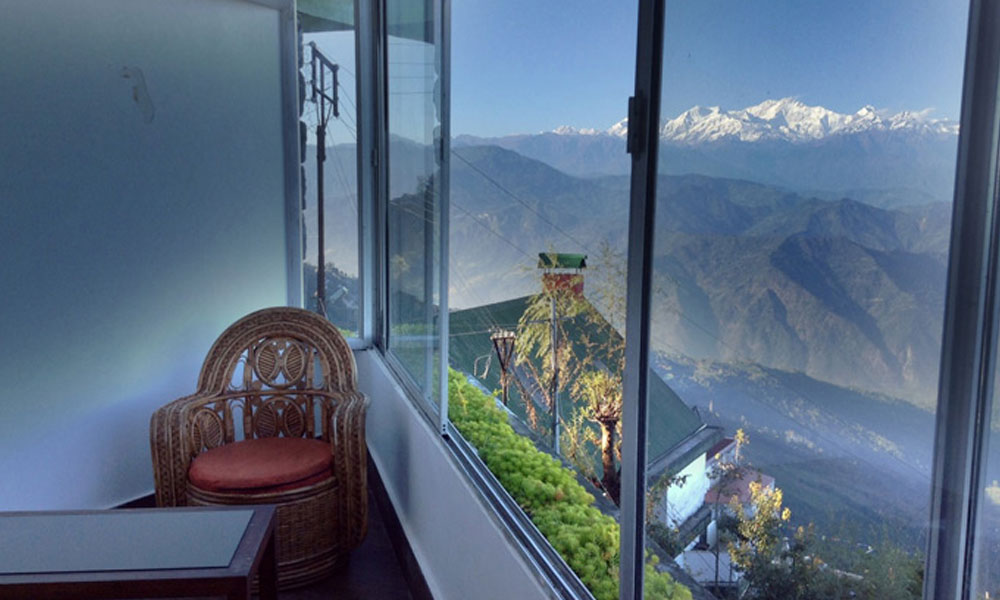
You can also get a perfect view of Kanchenjunga from several hotels in Darjeeling. This includes the hotels below!
- Cedar Inn on Jalapahar Road
- Summit Grace Hotel on Dr. Zakir Hussain Road
- Sinclairs Darjeeling in Gandhi Road
- Villa Everest in A.J.C. Bose Road
- Jai Hotels in Jai Complex Landenla Road
- Hotel Shangri-La Regency on Gandhi Road
Also, read:
